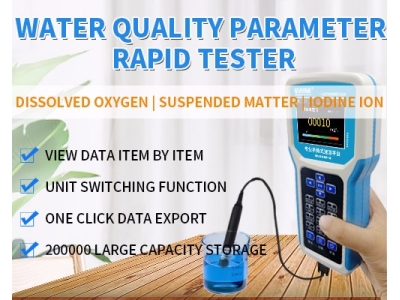Water level sensors are devices used to measure and monitor the level of water in various applications, such as reservoirs, rivers, tanks, and wells. These sensors play a crucial role in water management, flood control, and irrigation systems. There are several types of water level sensors available, each with its own working principle and application. In this article, we will explore the different types of water level sensors and understand how they work.

1. Float type water level sensor:
Float type water level sensors are one of the most common and simple designs. They consist of a buoyant float attached to a lever arm. The float moves up and down with the water level, which in turn, moves the lever arm. The movement of the lever arm is converted into an electrical signal using a potentiometer or a magnetic reed switch. The electrical signal is then calibrated to determine the water level.
The working principle of a float type water level sensor relies on the buoyancy of the float. As the water level rises, the float lifts, causing the lever arm to move. This movement is transformed into an electrical signal, which can be measured and converted into a corresponding water level reading. Float type sensors are simple, reliable, and cost-effective, making them suitable for a wide range of applications.
2. Pressure transducer type water level sensor:
Pressure transducer type water level sensors use the principle of hydrostatic pressure to measure the water level. These sensors consist of a pressure transducer that is submerged in the water and a reference tube or vented cable that is connected to the surface. The pressure transducer measures the pressure exerted by the water column, which is directly proportional to the water level.
The working principle of a pressure transducer type water level sensor is based on Pascal's law, which states that the pressure in a fluid is equal in all directions. As the water level rises, the pressure exerted by the water column on the pressure transducer increases. This change in pressure is converted into an electrical signal, which can be calibrated to determine the water level. Pressure transducer type sensors are accurate and reliable, making them suitable for applications that require precise water level measurements.
3. Ultrasonic type water level sensor:
Ultrasonic type water level sensors use ultrasonic waves to measure the distance between the sensor and the water surface. These sensors consist of a transducer that emits ultrasonic waves and a receiver that detects the reflected waves. The time it takes for the ultrasonic waves to travel to the water surface and back is used to calculate the distance, which is then converted into a water level reading.
The working principle of an ultrasonic type water level sensor is based on the speed of sound in air. The transducer emits ultrasonic waves that travel towards the water surface. When the waves reach the water surface, they are reflected back towards the sensor and detected by the receiver. By measuring the time it takes for the waves to travel to and from the water surface, the distance can be calculated. Ultrasonic type sensors are non-contact, easy to install, and suitable for applications where the water level changes rapidly or where contact with the water is not desired.
4. Capacitance type water level sensor:
Capacitance type water level sensors work on the principle of changes in capacitance due to the presence of water. These sensors consist of two conductive plates separated by a dielectric material. As the water level changes, the capacitance between the plates also changes, which can be used to determine the water level.
The working principle of a capacitance type water level sensor relies on the change in the dielectric constant of the material between the plates. When the water level rises, the dielectric constant increases, leading to an increase in capacitance. Conversely, when the water level decreases, the capacitance decreases. By measuring the capacitance, the water level can be determined. Capacitance type sensors are accurate, reliable, and unaffected by environmental factors such as temperature and pressure.
In conclusion, water level sensors are essential devices for monitoring and managing water levels in various applications. The different types of water level sensors, including float type, pressure transducer type, ultrasonic type, and capacitance type, each have their own working principles and applications. Understanding the working principles of these sensors helps in selecting the appropriate sensor for a specific application and ensures accurate and reliable water level measurements.






